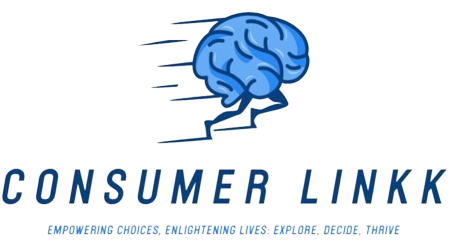If you’re looking to boost your strength and enhance your physical performance, then it’s time to unlock the power of your hip flexors. These often-overlooked muscles play a crucial role in our overall strength and athleticism, yet many of us neglect to give them the attention they deserve. By understanding the importance of hip flexors and incorporating targeted techniques into your fitness routine, you can tap into their full potential and achieve greater strength gains. In this article, we’ll explore the science behind hip flexors and provide you with practical tips and exercises to optimize their function. So, get ready to unleash the power of your hip flexors and take your strength training to the next level.

Understanding Hip Flexors
What are hip flexors?
Hip flexors are a group of muscles located in the front of your hips, responsible for pulling your thigh towards your chest. The main hip flexor muscle is called the iliopsoas, which consists of two muscles: the iliacus and the psoas major. These muscles play a crucial role in daily activities such as walking, running, and bending.
Importance of hip flexors for strength
Strong hip flexor muscles are essential for overall strength and stability. They help support proper posture, assist in athletic performance, and prevent injuries. When your hip flexors are properly conditioned, they allow for increased power and efficiency in movements involving the lower body, such as squats, lunges, and jumps.
Common Issues with Hip Flexors
Tight hip flexors
Tight hip flexors are a common issue, often caused by prolonged sitting or activities that don’t prioritize hip flexibility. When your hip flexors are tight, they can pull the pelvis forward, causing a decrease in your range of motion and potentially leading to lower back pain or dysfunction in other muscles.
Weak hip flexors
On the other hand, weak hip flexors can also pose a problem. When these muscles are weak, you may experience difficulty in performing simple movements like lifting your knees or maintaining proper form during exercises. Weak hip flexors may also contribute to poor posture and increased risk of injuries.
Effects of imbalanced hip flexors
Imbalanced hip flexors, whether they are tight or weak, can cause various problems throughout your body. They can lead to muscle imbalances, altered gait patterns, and even affect your ability to engage other muscles properly. Therefore, understanding how to correct these imbalances is crucial for maintaining overall strength and functionality.
Exercises for Strengthening Hip Flexors
Dynamic stretches
Dynamic stretching exercises are a great way to improve hip flexor strength. These exercises involve moving joints and muscles through a full range of motion, effectively warming up your hip flexors and improving their flexibility. Examples of dynamic stretches for hip flexors include lunges with a twist, high knees, and leg swings.
Static stretches
Static stretches are beneficial for increasing hip flexor flexibility and reducing tightness. These stretches involve holding a position without movement, targeting specific muscles. To stretch your hip flexors statically, try kneeling hip flexor stretches, lunge stretches, or the seated butterfly stretch. Remember to hold each stretch for at least 30 seconds on each side and breathe deeply throughout.
Resistance training
Incorporating resistance training exercises into your routine can help strengthen your hip flexor muscles. Exercises such as weighted squats, leg presses, and hip raises engage the hip flexors while also targeting other muscles in your lower body. Gradually increasing the resistance and intensity of these exercises will further enhance your hip flexor strength and overall lower body strength.
Importance of Flexibility
Benefits of flexibility for strength
Flexibility plays a vital role in enhancing strength and overall physical performance. When your muscles and joints are flexible, they are better able to move freely and efficiently during exercise. This increased range of motion enables you to engage muscles fully, resulting in improved strength gains and better overall performance.
Enhanced range of motion
Having flexible hip flexors allows for a greater range of motion in your hip joint. This increased range of motion improves your ability to perform exercises with proper form and technique, optimizing your results and reducing the risk of injury. A wider range of motion also means your muscles can work through a fuller contraction, leading to increased strength development.
Injury prevention
Maintaining good flexibility in your hip flexors is essential for injury prevention. Flexible muscles and joints are more resilient and less prone to strains or tears. By regularly stretching and strengthening your hip flexors, you can significantly reduce the risk of sustaining hip, lower back, or other related injuries during physical activities or exercises.

Proper Posture and Alignment
The role of hip flexors in posture
Your hip flexors play a significant role in maintaining proper posture. When your hip flexors are tight or imbalanced, they can pull the pelvis out of proper alignment, causing an anterior pelvic tilt. This postural misalignment can lead to a myriad of issues, including increased pressure on the lower back, decreased core stability, and compromised movement patterns.
Correcting alignment issues
To correct postural alignment issues caused by tight hip flexors, it is crucial to focus on stretching and strengthening exercises specifically targeting these muscles. Stretching exercises like the kneeling hip flexor stretch, butterfly stretch, and the standing quad stretch can help loosen tight hip flexors. Additionally, strengthening exercises such as planks, pelvic tilts, and glute bridges can help restore proper alignment and posture.
Exercises for posture improvement
In addition to stretching and strengthening the hip flexors, incorporating exercises that promote good posture can further enhance your alignment. Practicing exercises like deadlifts, bent-over rows, and shoulder blade retractions can help strengthen the muscles responsible for maintaining an upright posture and counteract the negative effects of tight hip flexors.
Core Strength and Stability
The connection between hip flexors and core
Your hip flexors work closely with your core muscles to provide stability and coordination during movements. When your hip flexors and core muscles are weak or imbalanced, it can negatively impact your overall stability and balance. It is essential to strengthen both your hip flexors and core muscles to maintain proper stability and control during exercise and everyday activities.
Exercises to strengthen core muscles
To strengthen your core muscles and improve the coordination between them and your hip flexors, incorporate exercises such as planks, Russian twists, and mountain climbers into your routine. These exercises engage multiple muscles simultaneously and promote proper core activation, helping to stabilize your hips and improve overall strength and stability.

Hip Flexors and Lower Back Pain
How tight hip flexors contribute to lower back pain
Tight hip flexors can contribute to lower back pain by pulling the pelvis forward and causing an excessive arch in the lower back, known as lordosis. This position puts stress on the spine and can lead to muscle tension, discomfort, and even chronic pain. Strengthening and stretching the hip flexors is essential for alleviating and preventing lower back pain caused by hip flexor imbalances.
Stretches and exercises for relief
To relieve lower back pain associated with tight hip flexors, it is crucial to incorporate targeted stretches and exercises into your routine. Some effective stretches include the kneeling lunge stretch, figure-four stretch, and the supine knee-to-chest stretch. Additionally, performing exercises like the bird dog, glute bridges, and hip raises can help strengthen the glutes and core, which can alleviate stress on the lower back.
Improving Hip Flexor Flexibility
Foam rolling techniques
Foam rolling is an excellent technique for improving hip flexor flexibility and reducing muscle tension. By applying pressure to tight or tender areas, foam rolling can help release knots and adhesions in the muscles, promoting better flexibility and reducing discomfort. When using a foam roller for the hip flexors, focus on rolling along the front and sides of the hips, applying moderate pressure and spending extra time on any tight spots.
Yoga poses for hip flexibility
Practicing yoga can greatly improve hip flexor flexibility. Poses such as Warrior I, Warrior II, Crescent Lunge, and Pigeon Pose specifically target the hip flexors, stretching and lengthening them. Regularly incorporating these yoga poses into your routine can help increase your hip flexor range of motion and promote overall flexibility.

Incorporating Hip Flexor Exercises into Workouts
Warm-up routines
Including hip flexor exercises as part of your warm-up routine is crucial to prepare your muscles for exercise. Dynamic stretches like leg swings, walking lunges, and hip circles help activate and mobilize the hip flexors, preparing them for the upcoming workout. By including specific hip flexor warm-up exercises, you can reduce the risk of injury and improve your performance during the main workout.
Strength training workouts
Hip flexor exercises can be incorporated into strength training workouts to target these muscles directly. Exercises such as weighted lunges, step-ups, and cable hip flexor pulls engage and strengthen the hip flexors while also working other lower body muscles. It is important to progressively increase the resistance and intensity of these exercises to continue challenging and strengthening the hip flexors.
Cooldown exercises
After completing a workout, it is essential to cool down and stretch your hip flexors to promote flexibility and prevent muscle tightness. Perform static stretches for the hip flexors, such as the kneeling hip flexor stretch and the standing quad stretch, to release any tension and promote recovery. Incorporating cooldown exercises ensures that your hip flexors remain flexible and less prone to tightness and imbalances.
Tips for Proper Hip Flexor Care
Avoiding overuse injuries
It is important to avoid overusing your hip flexor muscles, as this can lead to strains or overuse injuries. Be mindful of the volume and intensity of exercises that engage the hip flexors, and gradually increase your training load to allow for proper adaptation. Incorporating rest days and cross-training activities that target different muscle groups can help prevent overuse injuries and maintain proper hip flexor health.
Importance of rest and recovery
Rest and recovery are crucial for optimal hip flexor care. Adequate rest allows your hip flexor muscles time to repair and rebuild stronger. Incorporate rest days into your workout routine and prioritize recovery activities such as foam rolling, stretching, and gentle mobility exercises. Pay attention to any signs of fatigue or discomfort, and listen to your body to prevent overexertion and promote proper healing.
Understanding and caring for your hip flexors is essential for maintaining overall strength, stability, and injury prevention. By incorporating exercises, stretches, and proper alignment techniques into your routine, you can unleash the power of your hip flexors and enhance your strength and performance in various physical activities. Remember to prioritize flexibility, core strength, and mobility to keep your hip flexors healthy and functioning optimally. Take care of your hip flexors, and they will take care of you!



